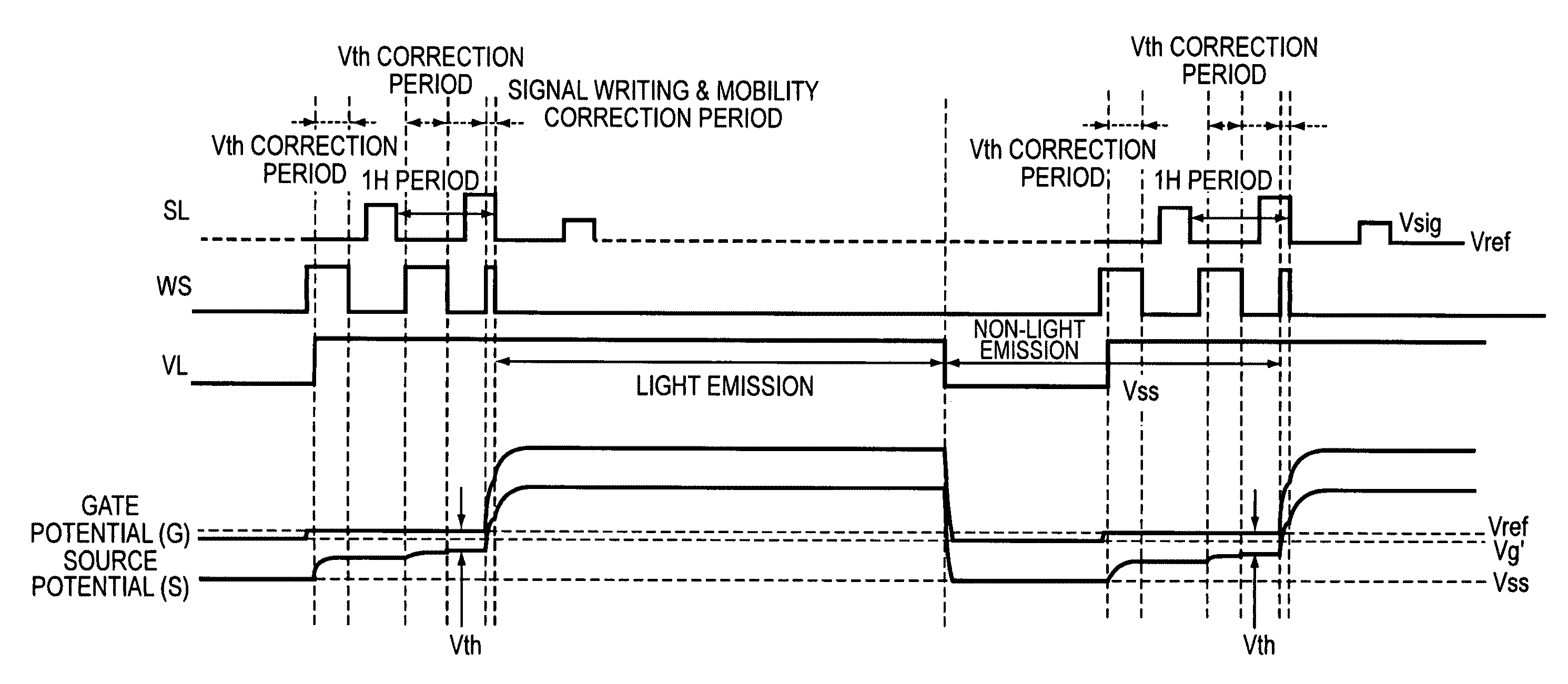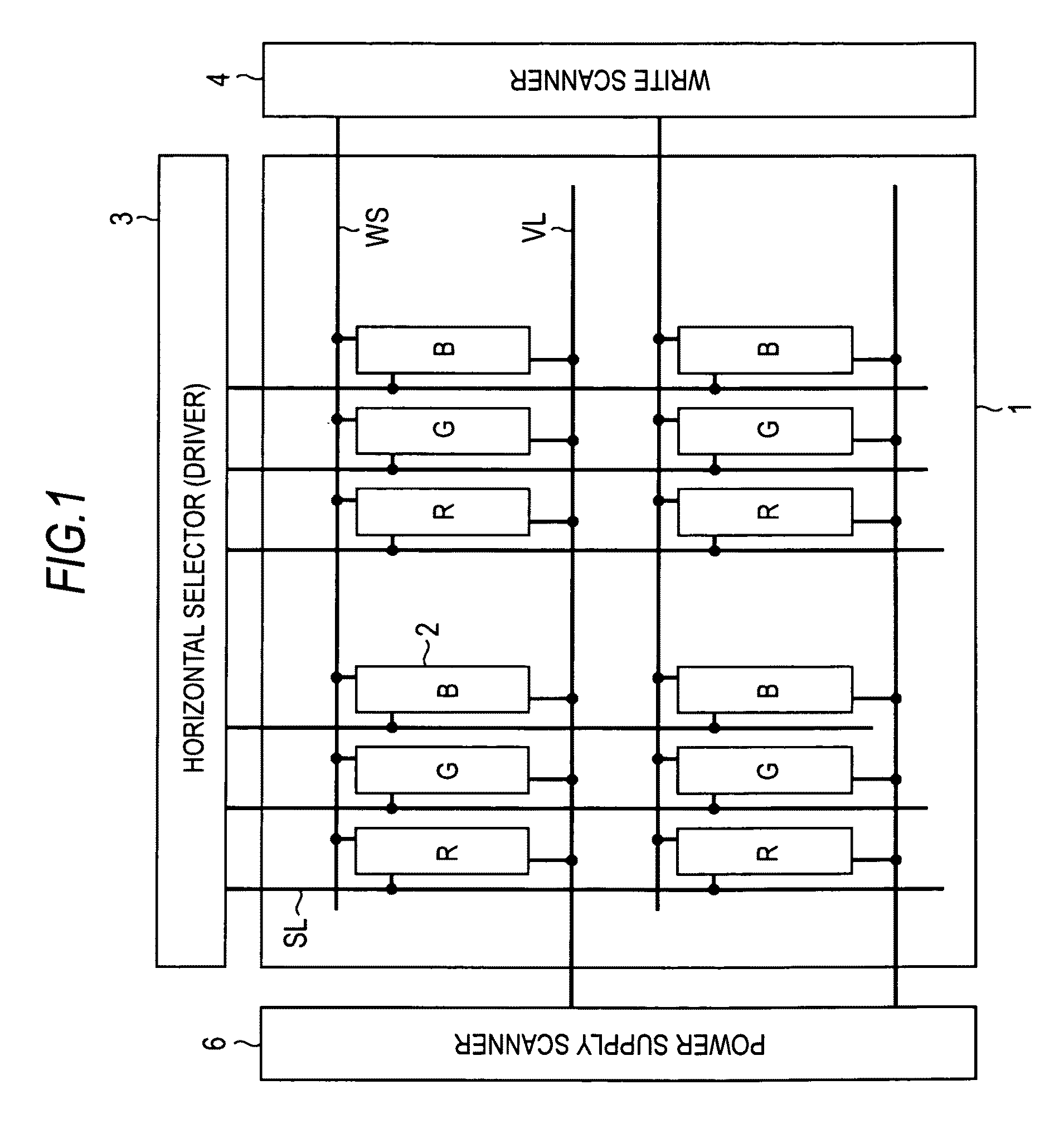Display device and electronic product
a technology of electronic products and display devices, applied in the field of display devices, can solve the problems of image quality failure called “burning” prone to occur, the luminance of each pixel in the organic el display is reduced with lapse of time, and the current/luminance characteristics tend to deteriorate with time, so as to achieve the effect of reducing the number of light sensors, reducing the detection time of light emitting luminance, and reducing the total detection tim
- Summary
- Abstract
- Description
- Claims
- Application Information
AI Technical Summary
Benefits of technology
Problems solved by technology
Method used
Image
Examples
modification example
[0076]FIG. 6 is a block diagram showing a modification example of the display device according to the first embodiment shown in FIG. 5. In order to make understanding easier, corresponding reference numerals are given to portions corresponding to components shown in FIG. 5. A different point is that the light sensor 8 is arranged on the surface side, not on the reverse side, of the panel “0”. When the light sensor 8 is arranged on the surface side, there is an advantage that the light receiving amount is increased as compared with the case of the reverse side. However, when the light sensor 8 is arranged on the surface side of the panel “0”, there occurs a disadvantage that light emission from part of pixels is sacrificed.
[Configuration of the Panel]
[0077]FIG. 7 shows a schematic plan view and a cross-sectional view showing a configuration of the panel included in the display device shown in FIG. 5. As shown in the drawing, the screen unit 1 of the panel “0” is sectioned into plural...
second embodiment
[Timing Chart]
[0102]FIG. 13 is a timing chart of a display device according to a second embodiment of the invention. In order to make understanding easier, the same notation as the timing chart of the first embodiment shown in FIG. 10C is applied. The embodiment differs from the first embodiment in a point that plural optical sensors are not assigned to plural regions. Instead of that, detection of light emitting luminances of pixels is performed by a light sensor common to plural regions 1 to N. Also in this case, pixels simultaneously emit light in respective regions. The common light sensor detects light emitting luminances of pixels which simultaneously emit light in one frame in a time division manner in the same one frame. In this manner, the common light sensor measures light emitting luminances of pixels as detection targets in respective regions in a period of time of one frame. When the operation proceeds to a next frame, pixels which are next detection targets emit light ...
third embodiment
[Panel Configuration]
[0103]FIG. 14 is a block diagram showing a panel configuration of a display device according to a third embodiment of the invention. In order to make understanding easier, the codes which are the same as the panel block diagram of the first embodiment shown in FIG. 1 are applied. The display device basically includes a pixel array unit (screen unit) 1 and a drive unit which drives the pixel array unit 1. The pixel array unit 1 includes rows of first scanning lines WS, similarly, rows of second scanning lines DS, columns of signal lines SL, and matrix-state pixels 2 arranged at portions where respective first scanning lines WS and respective signal lines SL intersect. On the other hand, the drive unit includes a write scanner 4, a drive scanner 5 and a horizontal selector 3. The write scanner 4 performs line-sequential scanning of pixels 2 row by row by outputting a control signal to respective first scanning line WS. The drive scanner 5 also performs ling-sequen...
PUM
 Login to View More
Login to View More Abstract
Description
Claims
Application Information
 Login to View More
Login to View More - R&D
- Intellectual Property
- Life Sciences
- Materials
- Tech Scout
- Unparalleled Data Quality
- Higher Quality Content
- 60% Fewer Hallucinations
Browse by: Latest US Patents, China's latest patents, Technical Efficacy Thesaurus, Application Domain, Technology Topic, Popular Technical Reports.
© 2025 PatSnap. All rights reserved.Legal|Privacy policy|Modern Slavery Act Transparency Statement|Sitemap|About US| Contact US: help@patsnap.com



